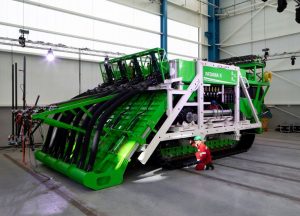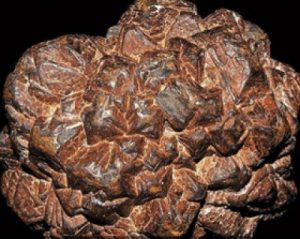
Patania II, owned by Dede of Belgium
Introduction
Today we noted two contrasting developments, 1) the price of Brent crude oil had fallen below US$60 per barrel, and 2) a company will start deep sea mining of precious metals.
In the 1980’s I worked as a refining planning engineer in ESSO’s refining unit in Port Dickson, Malaysia. During that time, as a refining planning engineer, I was tasked on production planning to refine Tapis crude, which was pumped from oil platforms located offshore in South China Sea.
Like crude oil before, precious metals used to make batteries for electric vehicles will also be mined from sea beds. According to a report in The Times London, Patania II, a 25-tonne robot tractor, will spearhead the latest push to mine precious metals from the ocean floor. Patania II would be lowered 4,500 metres to the Pacific Ocean sea bed between Mexico and Hawaii in April 2019. It will gather nodules of rock on the ocean floor that contain high concentrations of metals used in electric car batteries and renewable energy systems. The companies which are racing to mine the ocean floors are hoping to recover manganese, molybdenum, cobalt, nickel and vanadium. The companies contend that their deep sea mining operations would cause less environmental damage than producing the same mount on land by drilling and blasting millions of tonnes of rocks.
Britain is one of several countries sponsoring sea-bed mining companies that have obtained licenses from the International Seabed Authority (ISA), based in Jamaica, to explore the Clarion Clipperton Zone, an area in the Pacific Ocean covering about six million sq km. This area is thought to hold more of the metals being targeted than all terrestrial metal reserves (see our earlier blog). Access to its mineral reserves is controlled by the ISA because it is beyond the jurisdiction of any nation.
Chris Williams, the managing director of UK Sea Bed Resources, owned by Lockheed Martin of the US, said that his company planned to mine about 9,000 sq km of the zone. “Sea bed mining will form an essential path to the future supply of precious metals for electric vehicles,” he said.
The ISA, however, needs to agree a mining code with environmental safeguards before extraction can begin. A draft has been produced to be agreed in 2020 but some of the ISA’s 168 members have a vested interest in delaying progress to protect their land-based mines from cheaper sea-bed minerals.
Environmental Concerns of Sea-Bed Mining
The mining companies need to complete environmental impact assessments before starting extraction. The pilot operation of the Patania II, owned by Global Sea Mineral Resources (GSR), a subsidiary of the Belgian dredging company Dede, will leave nodules on the sea bed. A research vessel with 50 scientists on board, funded by EU, will study the impact. It is estimated that each nodule typically weighs about 1 kg and contains several different metals, meaning one sea-bed mine could deliver as many commodities as two or three land-based mines.

The industry argues that sea-bed mining would reduce reliance on countries such as DRC, which produces most of the world’s cobalt for batteries.
Michael Lodge, the ISA’s British secretary-general, said that commercial extraction could start in 2023 but that depended on whether investors considered it as commercially viable. He added that some damage is inevitable but sea-bed mining was “the most highly regulated activity that’s never taken place”.
Watch out DRC on future development of sea-bed mining!
Please click below on polymetallic nodules published by the ISA.